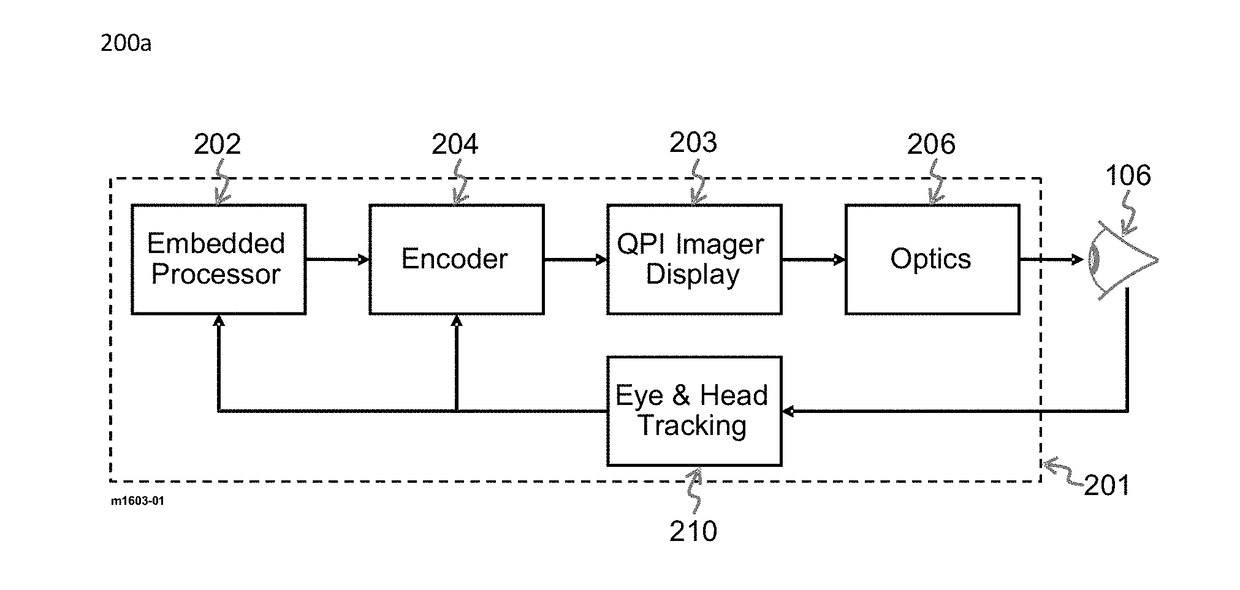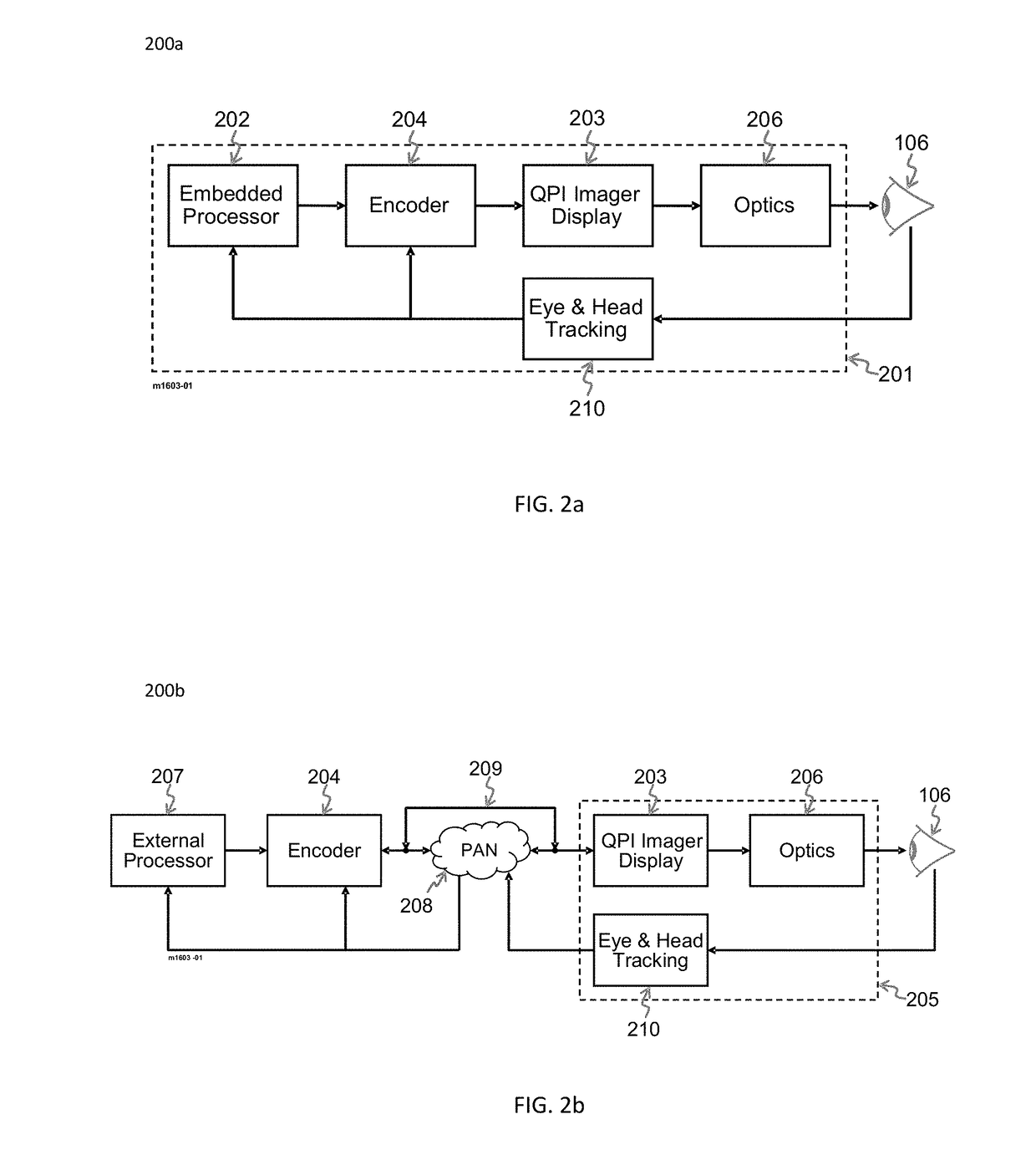Compression Methods and Systems for Near-Eye Displays
a near-eye display and compression method technology, applied in the field of compression methods for imaging systems, can solve the problems of not meeting the data compression and low latency requirements, transmitting data via, and lcd layer patterns are based on computationally intensive tensor factorization,
- Summary
- Abstract
- Description
- Claims
- Application Information
AI Technical Summary
Benefits of technology
Problems solved by technology
Method used
Image
Examples
Embodiment Construction
[0028]References in the following detailed description of the present invention to “one embodiment” or “an embodiment” means that a particular feature, structure, or characteristics described in connection with the embodiment is included in at least one embodiment of the invention. The appearances of the phrase “in one embodiment” in various places in this detailed description are not necessarily all referring to the same embodiment.
[0029]Presenting the viewer of the near-eye display with a high resolution and wide field of view (FOV) 3D viewing experience requires display resolutions that approach the eye viewing limits of eight mega pixels per eye. The resultant increase in display resolution imposes several requirements for a near-eye display system as a whole, the most challenging of which is the increased data interface bandwidth and processing throughput. This invention introduces methods for dealing with both of these challenges in near-eye display systems through the use of ...
PUM
 Login to View More
Login to View More Abstract
Description
Claims
Application Information
 Login to View More
Login to View More - R&D
- Intellectual Property
- Life Sciences
- Materials
- Tech Scout
- Unparalleled Data Quality
- Higher Quality Content
- 60% Fewer Hallucinations
Browse by: Latest US Patents, China's latest patents, Technical Efficacy Thesaurus, Application Domain, Technology Topic, Popular Technical Reports.
© 2025 PatSnap. All rights reserved.Legal|Privacy policy|Modern Slavery Act Transparency Statement|Sitemap|About US| Contact US: help@patsnap.com



